Selected as the official California state grass in 2004, purple needle grass (
Stipa pulchra)
has a tough constitution and showy awns, making this native bunchgrass an option for low-water home gardens and restoration projects (see the caution regarding growing it near pets below, though). The quintessential California native grass, purple needle grass announces itself each spring with a flush of growth, even without rain. In the summer it shimmers with gold while its awns and seeds sway and sparkle in the breeze. It looks best during the summer and fall, when other native plants are fading. It goes dormant as the year progresses, only to revive again in the spring.
Purple needle grass is the most widespread native perennial grass in California. It is long lived and has deep roots to withstand drought. As such, it is often used for restoration projects. Yet purple needle grass can also be used in a residential meadow.
Caution: The seeds can lodge and burrow into the fur, skin and ears of pets. Avoid this by mowing purple needle grass before the seeds mature, to no lower than 4 inches.
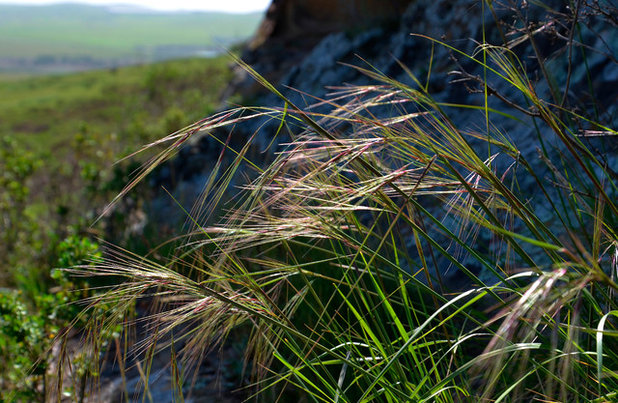
Pete Veilleux, East Bay Wilds
Botanical name: Stipa pulchra Common name: Purple needle grass
Origin: Native throughout California, from the northwest to the north and central foothills of the Sierra Nevada, southern Sacramento Valley, central California, south coast and Western Peninsular Range, into Baja and the Channel Islands
Natural habitat: Oak woodland, chaparral, coastal sage scrub, grassland and prairie, below 4,100 feet
Where it will grow: Hardy to 25 degrees Fahrenheit (USDA zones 7 to 11;
find your zone)
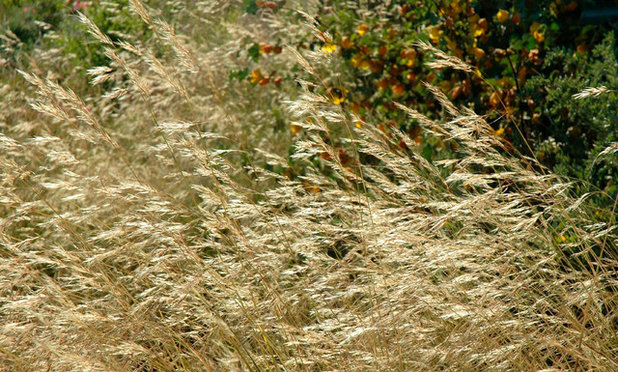
Pete Veilleux, East Bay Wilds
Water requirement: Drought tolerant to moderate water; tolerates seasonal flooding
Light requirement: Full to partial sun
Mature size: 1 foot to 3 feet tall and 2 feet wide; can reseed vigorously
Benefits and tolerances: Tolerates clay, alkaline soil and seasonal flooding; stabilizes slopes; good under oaks; deer resistant
Seasonal interest: Summer to fall, showy seeds and awns sparkle in the sun
When to plant: Late fall is ideal for both seeds and plants; spring is acceptable when it’s not a drought year
Shown: Golden awns and seeds of purple needle grass en masse
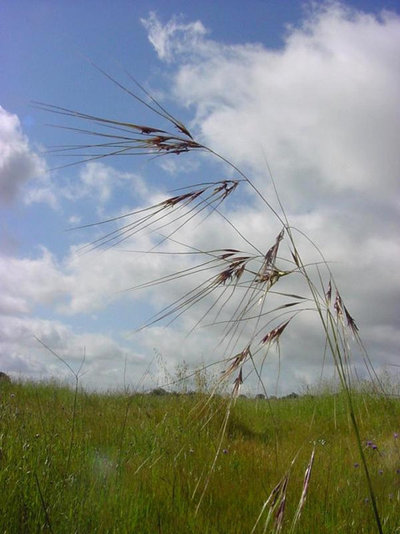 Distinguishing traits.
Distinguishing traits. As a perennial, purple needle grass can live up to 150 years and roots itself as deep as 16 feet down — although 2 to 6 feet deep is more typical. It grows as individual plants and in clumps up to 20 to 50 feet across.
After a long winter sleep, purple needle grass awakens in spring with new green growth. It’s most spectacular in summer and fall, when its showy awns and seeds glitter in the sun.
Photo by the Santa Monica Mountains National Recreation Area
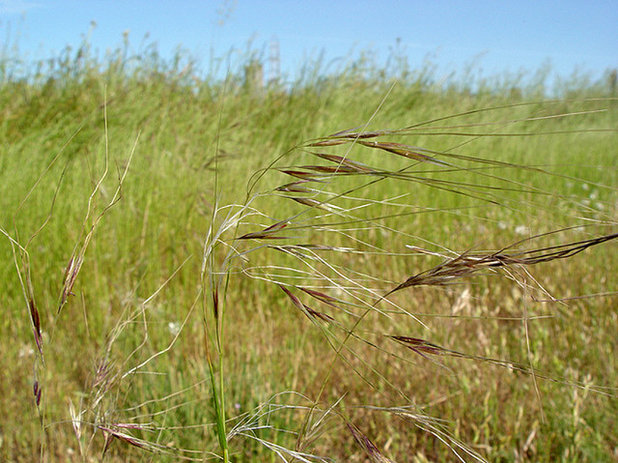
Carol W. Witham
How to use it. Mass purple needle grass in sites from large restoration projects to small home meadows, or plant individual plants throughout the garden. When mass planted, purple needle grass makes a stunning sea of gold, yet it also makes a great statement planted individually or in small groupings that glint like glitter in the sun.
Purple needle grass is a low-water lawn alternative. Keep in mind that it won’t form a uniform sod and performs best when interplanted in a naturalistic meadow with other California native wildflowers and perennials. Use it in naturalistic settings, meadows, slopes, clay soils and hot, dry areas.
Shown: The green field of late spring
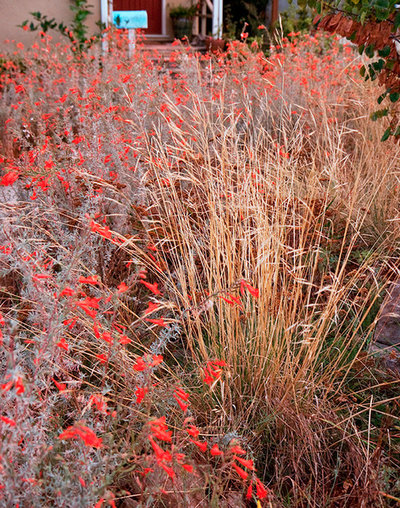
John J. Kehoe Photography
Planting notes. Since purple needle grass doesn’t form large, solid stands, it is best in small to moderate-size meadows mixed with wildflowers or perennials. Plant it in 3-foot sections — about five to 10 plants — with other plants between.
Shown: Purple needle grass with summer-blooming California fuchsia (
Epilobium canum, syn.
Zauschneria californica)
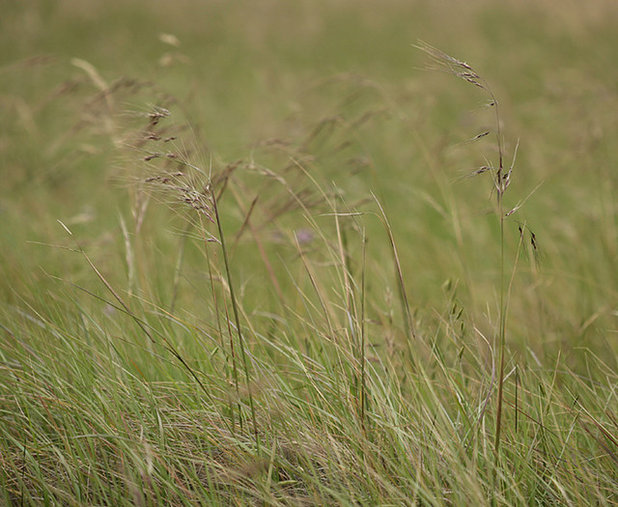
Steve Matson
Seeding notes. For best results, plant the seed ¼ to ½ inch deep in firm, weed-free soil. Use about 25 seeds per foot, or 15 pounds per acre. It’s definitely best when seeded in the late fall for the early sprouting of seedlings. Purple needle grass can reseed vigorously.
More: Why Aggressive Plants Might Actually Be Your Friends
Browse plants native to more regions of the U.S.





